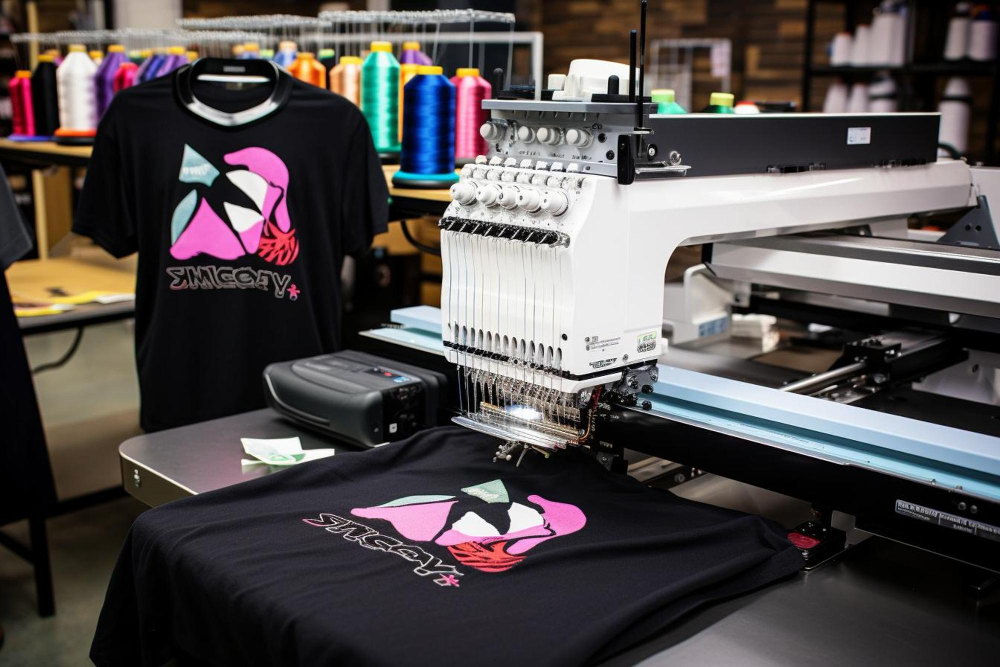**UV DTF printing** has revolutionized the way we approach high-quality prints, merging innovative technology with artistic design. This advanced method, known as Direct to Film printing, utilizes ultraviolet light to cure specially formulated inks, ensuring vibrant colors and exceptional durability on a myriad of surfaces. The UV printing process enables creators to produce remarkable designs on textiles, plastics, and metals alike, resulting in stunning products that meet customer demands for both quality and customization. As we delve deeper into the intricacies of this powerful printing method, you’ll discover its step-by-step journey from concept to creation, shedding light on how UV printing technology has transformed industries and set new standards for print quality. Join us in exploring the exciting world of UV DTF printing and unlock the potential it holds for your projects.
When it comes to cutting-edge printing solutions, **Direct to Film (DTF)** imaging is taking the industry by storm. This technology leverages the power of **ultraviolet (UV)** light to create stunning visual outputs, commonly referred to as **UV printing**. Combining speed with flexibility, the **DTF printing process** allows for the application of inks directly onto a specially coated film before transferring it onto various materials. The result? High-quality prints that are not only eye-catching but also incredibly resilient. With advancements in UV printing technology, businesses can now cater to diverse clientele, showcasing vibrant designs that last.
Understanding UV DTF Printing Technology
UV Direct to Film (DTF) printing is a cutting-edge technology that revolutionizes the way designs are transferred onto various materials. By utilizing ultraviolet light to cure special inks, this process creates vibrant, high-quality prints that stand out. This method is particularly advantageous because it allows for the application of intricate designs on substrates such as textiles, plastics, and metals with ease. The integration of UV printing technology not only enhances the aesthetic appeal but also ensures the longevity of the prints.
In the realm of printing, UV DTF is gaining traction due to its ability to provide excellent color accuracy and detail. The process begins once designs are crafted using graphic design software, followed by the appropriate preparation of transfer films. Each ingredient in the UV DTF process has been optimized for superior quality, ensuring that the end products are not only visually stunning but also durable, making them suitable for a vast array of applications.
Frequently Asked Questions
What is the UV DTF printing process?
UV DTF printing, or UV Direct to Film printing, is a process that uses ultraviolet light to cure inks printed onto a special film. This method allows for high-quality prints on various substrates including textiles, plastics, and metals, ensuring vibrant colors and durability.
How does UV printing technology enhance DTF printing results?
UV printing technology significantly enhances DTF printing by using UV light to cure inks instantly, which improves color vibrancy and durability. This process prevents ink smudging and allows for high-resolution designs that are long-lasting, making them perfect for diverse applications.
What are the benefits of using Direct to Film printing?
The benefits of Direct to Film printing include the ability to print on various materials, the production of high-quality prints with bright colors, and the flexibility to create custom designs. Additionally, the quick curing process with UV light makes production faster and more efficient.
What materials can be used with UV DTF printing?
UV DTF printing can be applied to a wide range of materials, including textiles, plastics, and metals. This versatility allows businesses to customize products across different industries, from fashion to promotional items, utilizing high-quality prints.
What advancements have been made in UV DTF printing technology?
Recent advancements in UV DTF printing technology focus on improving ink formulations for better adhesion and durability. Companies are also exploring eco-friendly inks and sustainable practices, responding to consumer demand for environmentally conscious production methods.
How does the curing process work in UV DTF printing?
In UV DTF printing, the curing process involves passing the printed film under a UV light source, which instantly cures the ink. This solidification process is crucial as it enhances the durability and vibrancy of the print, ensuring a high-quality finish that adheres well to the substrate.
| Step | Description |
|---|---|
| 1. Design Creation | Creating designs using software like Adobe Illustrator, focusing on resolution and compatible file formats. |
| 2. Film Preparation | Preparing the transfer film, printing the design using UV inks on specially coated DTF film. |
| 3. Curing Process | Curing the printed design under UV light to solidify inks, followed by quality checks for fidelity. |
| 4. Transfer Process | Transferring the design onto the substrate using heat and pressure for a lasting bond. |
| 5. Final Product Refinement | Post-processing and quality assurance ensure finished products meet high standards before delivery. |
Summary
UV DTF printing is a meticulous and innovative process that involves a series of carefully calculated steps—from initial design to the final product. This technology not only provides high-quality prints on various substrates but also emphasizes durability and vibrancy, making it suitable for a wide range of applications. As advancements in UV DTF printing continue to emerge, including eco-friendly inks and improved adhesion properties, businesses can utilize this method to cater to consumer demands in a sustainable manner. The future of UV DTF printing is bright, characterized by its growing versatility and expanding market reach.



